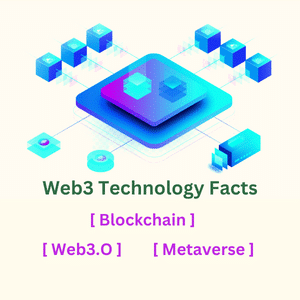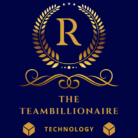Knowledge Of The Highest Growing Web3 Technology, What is Web3, and Future Growth In This Sector With Using Of Blockchain In Web3.
Web3 Technology Facts:
It has become a catchall term for the vision of a new, better internet. At its core, Web3 uses blockchains, cryptocurrencies, and NFTs to give power back to the users in the form of ownership. Web1 was read-only, Web2 is read-write, and Web3 will be read-write-own. Gavin Wood coined the term in 2014, there has been a considerable surge in interest in cryptocurrency, improvements to layer 2 scaling solutions, massive experiments with new forms of governance, and revolutions in digital identity.
Core ideas of Web3 :
- Web3 is decentralized: instead of large swathes of the internet controlled and owned by centralized entities, ownership gets distributed amongst its builders and users.
- This is permissionless: everyone has equal access to participate in Web3, and no one gets excluded.
- It has native payments: it uses cryptocurrency for spending and sending money online instead of relying on the outdated infrastructure of banks and payment processors.
- Web3 is trustless: it operates using incentives and economic mechanisms instead of relying on trusted third parties.

Why is Web3 important? :
- Although Web3’s killer features aren’t isolated and don’t fit into neat categories.
- Ownership: Web3 gives you ownership of your digital assets in an unprecedented way. Exa : if you stop playing, you can sell or trade your in-game items on open markets and recoup their value.
- Censorship resistance: On It, your data lives on the blockchain. When you decide to leave a platform, you can take your reputation with you, plugging it into another interface that more clearly aligns with your values.
- Decentralized autonomous organizations (DAOs) : As well as owning your data in Web3, you can own the platform as a collective, using tokens that act like shares in a company. DAOs let you coordinate decentralized ownership of a platform and make decisions about its future. DAOs are defined technically as agreed-upon smart contracts that automate decentralized decision-making over a pool of resources (tokens). Users with tokens vote on how resources get spent, and the code automatically performs the voting outcome.
- Identity : As you have a lot of social platform accounts and if you want to change your id you should change all the platforms but this technology provides a single platform for all issues. Web3 solves these problems by allowing you to control your digital identity with an Ethereum address and ENS profile. Using an Ethereum address provides a single login across platforms that is secure, censorship-resistant, and anonymous.
- Native payments: Web3 uses tokens like ETH to send money directly in the browser and requires no trusted third party like Bank.
Web3 limitations :
- Accessibility: important Web3 features, like Sign-in with Ethereum, are already available for anyone to use at zero cost. But, the relative cost of transactions is still prohibitive to many. It can be solved through network upgrades and layer 2 scaling solutions. The technology is ready, but we need higher levels of adoption on layer 2 to make Web3 accessible to everyone
- User experience: Users must comprehend security concerns, understand complex technical documentation, and navigate unintuitive user interfaces. Wallet providers, in particular, are working to solve this, but more progress is needed before Web3 gets adopted en masse.
- Education: Ethereum.org contributes to Web3 education through our Translation Program, aiming to translate important Ethereum content to as many languages as possible.
- Centralized infrastructure: GitHub, Twitter, Discord, etc. Many Web3 companies are rushing to fill these gaps, but building high-quality, reliable infrastructure takes time.
Web2 refers to the version of the internet most of us know today. An internet dominated by companies that provide services in exchange for your personal data. Web3, in the context of Ethereum, refers to decentralized apps that run on the blockchain. These are apps that allow anyone to participate without monetizing their personal data.
How Blockchain Use In Web3 :
Blockchain technology is most simply defined as a decentralized, distributed ledger that records the provenance of a digital asset. network connected through peer-to-peer nodes. Typically, this storage is referred to as a ‘digital ledger.’ which makes the history of any digital asset unalterable and transparent through the use of decentralization and cryptographic hashing.
SmartContract In Blockchain :
- In Web3.O and Blockchain-Based Applications like Dapps, Defi and NFT Blockchain Technology is work.
- Blockchain-Based Smart Contract Used In the backend and Web3 is used for Front End Development.
- Blockchain and Web3 can give a high Amount Of Security to the owner and web user.
- It reduces third-party participation in the organization.
Future Of Web3 :
Some experts at Market Research Future predict that in 2023, the Web3. 0 blockchain technology sector will be worth more than six trillion dollars. Web3. 0 will continue to grow at a CAGR of 44.6% from 2023 to 2030.
WEB3 LIMITATIONS :
Scalability, UX, Accessibility, Cost – most successful dapps put very small portions of their code on the blockchain as it’s expensive.
